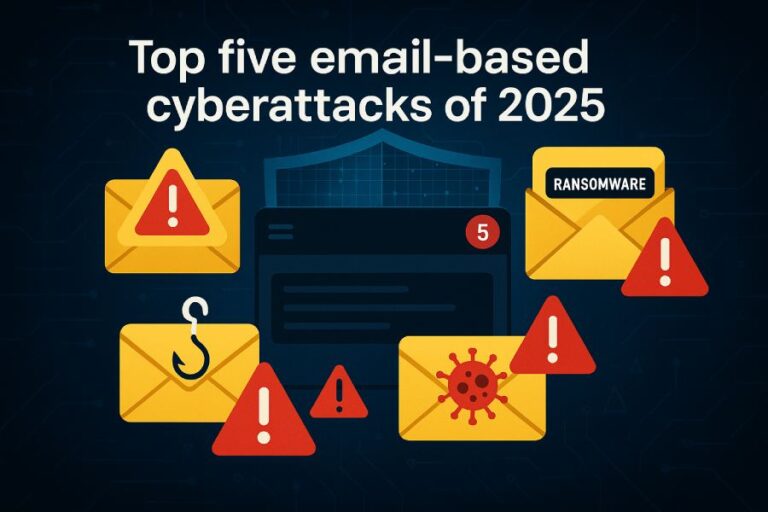Understanding SPF Records: What They Are and How They Work
The Sender Policy Framework (SPF) is a critical component of email authentication designed to combat fraudulent email practices such as email spoofing. At its core, an SPF record is a DNS TXT record published in a domain’s DNS zone file that specifies which mail servers are authorized to send emails on behalf of that domain. When an email is received, recipient servers perform an SPF lookup by querying the DNS for the domain’s SPF record to verify if the sending mail server’s IP address matches the authorized list defined within the SPF configuration.
An SPF record consists of various SPF mechanisms and SPF qualifiers that collectively describe the sending policies. For example, mechanisms like ip4, ip6, include, a, mx, ptr, exists, and modifiers dictate the sources qualified to send emails for your domain. These mechanisms are combined in a well-structured string following strict SPF syntax rules, with each element precisely influencing the SPF validation process. Practically, an SPF record might look like this:
v=spf1 ip4:192.168.0.1 include:_spf.google.com -allThis specifies that only the IP 192.168.0.1 and servers included in Google’s SPF record are authorized senders, with a hard fail (`-all`) for all others. Proper SPF setup and SPF configuration are fundamental to ensuring reliable SPF pass or SPF softfail results instead of SPF failure or SPF neutral result, both of which could indicate unauthorized activity or configuration errors.
The Importance of SPF in Email Authentication
SPF works hand-in-hand with other authentication frameworks like DKIM (DomainKeys Identified Mail) and DMARC (Domain-based Message Authentication, Reporting, and Conformance) to create a layered defense against email deception. By validating the sender’s IP against the published SPF record, organizations can prevent unauthorized sources from masquerading as legitimate senders. This significantly enhances SPF security, reducing SPF authentication failure and closing loopholes exploited by phishing or spam campaigns.
Industry leaders like Microsoft, Google, and Cisco recommend consistent SPF deployment coupled with DKIM and DMARC to maximize protection. For example, companies such as Proofpoint, Barracuda Networks, Reknown Vendors Mimecast and Agari, as well as tools from dmarcian and OnDMARC, facilitate better SPF compliance and holistic email security. Moreover, the SPF record TTL (Time-to-Live) affects how often DNS cache refreshes occur, playing a role in practical SPF email spoofing prevention.
Common Email Spoofing Techniques and Their Impact
Cybercriminals frequently exploit domains lacking proper SPF records or those with SPF record errors. Spoofers imitate trusted sources by sending phishing emails that bypass basic filters, deceive recipients, and cause financial or reputational damage. Spoofing techniques often involve:
- Use of forged sender addresses with domains missing SPF record setup
- Exploiting domains with poorly constructed SPF records violating SPF DNS lookup limit or SPF record length limit
- Strategically avoiding SPF policies by causing SPF softfail or deceptive SPF neutral result

The impact ranges from spear-phishing attacks on enterprises via platforms such as Zoho Mail or Mailchimp to large-scale spam waves targeting service providers like Amazon SES, SendGrid, SparkPost, and Postmark. Consequently, lack of proper SPF record optimization and SPF record troubleshooting can increase a domain’s vulnerability to exploitation.
Overview of SPF Record Format Checkers: Features and Benefits
Navigating SPF syntax complexity and DNS constraints necessitates reliable SPF record tools such as SPF record syntax checkers and SPF record parsers. Popular tools like MxToolbox, Kitterman SPF Validator, DNSstuff, and offerings from PowerDMARC, EasyDMARC, and DMARC Analyzer provide comprehensive scanning and validation services. These tools assist administrators by:
- Performing automated SPF record testing and validation
- Detecting SPF record errors including syntax mistakes, exceeding SPF DNS lookup limit, or overlooking mechanisms like SPF mechanism mx or SPF mechanism ptr
- Presenting clear diagnostics on SPF compliance and guidance for SPF record optimization
- Offering SPF record generators to streamline new SPF record configuration following SPF record best practices
- Highlighting potential risks from exceeding SPF record length limit or improper SPF modifiers
For instance, by parsing an SPF record, these tools can reveal missing or redundant mechanisms, enabling administrators using GoDaddy, Namecheap, or Cloudflare DNS services to adjust their SPF setup proactively. Integration with platforms such as Oracle, IBM, and the OpenSPF Project furthers technical accuracy and compatibility.
How SPF Record Format Checkers Enhance Email Security
Using sophisticated SPF record format checkers directly supports SPF and DMARC strategies, ensuring that domains are not only properly configured but also aligned with SPF alignment and SPF sender alignment policies. This alignment prevents forgery where an attacker might pass SPF checks but use unrelated domain names.
By conducting thorough SPF DNS queries and simulating real-world mail flow scenarios, these tools can predict whether emails will attain SPF pass, suffer SPF failure, or return a SPF softfail or neutral result. They empower security teams to pinpoint problematic SPF mechanisms, such as inefficient use of SPF mechanism include (which can lead to multiple DNS lookups), or excessive reliance on SPF mechanism ptr, which can be slow and unreliable.
Furthermore, tools from trusted providers like Valimail, Agari, and PowerDMARC automate SPF record troubleshooting across complex enterprise environments, enabling rapid response to SPF email spam protection challenges. Leveraging these resources notably reduces the risk of SPF authentication failure, thwarting phishing and spoofing attempts that might otherwise harm customers and internal users alike.
With a strong SPF record verified by format checkers, organizations achieve enhanced email deliverability and can confidently integrate SPF with DKIM and DMARC for a unified email security posture. This is essential for any domain owner committed to maintaining trust in their email communications ecosystem.
Step-by-Step Guide to Creating a Valid SPF Record
Implementing a correct SPF record is essential for robust email authentication and protection against spoofing and phishing attacks. The Sender Policy Framework uses DNS TXT records to specify authorized mail servers allowed to send emails on behalf of your domain. Below is a detailed guide for SPF setup and configuration:
- Inventory Your Sending Sources: Begin by cataloging all email sending services used by your organization, including cloud-based platforms like Microsoft 365, Google Workspace, SendGrid, Amazon SES, Mailchimp, SparkPost, and transactional email services such as Postmark.
- Understand SPF Syntax and Mechanisms: Familiarize yourself with SPF mechanisms including `include`, `ip4`, `ip6`, `a`, `mx`, `ptr`, `exists`, as well as SPF qualifiers (`+`, `-`, `~`, `?`) and modifiers. For instance, `include` mechanisms permit delegating SPF validations to trusted third-party domains.
- Respect SPF DNS Lookup and Length Limits: SPF records are subject to a maximum DNS lookup count of 10 and an overall record length limit (usually 255 characters per DNS TXT segment). Incorporate SPF flattening if necessary to optimize lookups and stay within limits.
- Publish the SPF Record: Use your DNS hosting provider’s interface—GoDaddy, Namecheap, Cloudflare, or others—to add the DNS TXT record.
- Verify TTL Settings: Configure the SPF record TTL (Time to Live) considering your desired propagation time. A typical TTL ranges from 1 hour to 24 hours.
- Perform SPF Record Testing and Validation: Use SPF record testing tools to verify syntax correctness and operational behavior before deployment.

Following these steps ensures SPF compliance and reduces the likelihood of SPF authentication failure.
Using SPF Record Format Checkers to Validate Your SPF Records
SPF record validation is critical for ensuring your SPF record syntax and configuration are correct and that no misconfigurations will cause SPF failure or a neutral result during SPF email spam protection checks.
Popular SPF record syntax checkers and SPF validation tools include:
- MxToolbox SPF Record Lookup and Testing: Offers comprehensive SPF validation with detailed analysis of each SPF mechanism and DNS lookup count.
- Kitterman SPF Validator: Provides real-time SPF syntax checking and SPF DNS query simulations for understanding SPF mechanisms and modifiers.
- DMARC Analyzer and OnDMARC: These solutions include integrated SPF record parsers and SPF record syntax checkers, helping administrators analyze SPF alignment and SPF pass rates.
- PowerDMARC and EasyDMARC: Enterprises benefit from detailed SPF record troubleshooting dashboards, highlighting SPF failures, SPF softfail results, and SPF compliance levels.
These tools run SPF record parsers to verify SPF syntax, check SPF DNS query limits, ensure the validity of SPF mechanisms, and simulate SPF lookup resolutions to confirm SPF pass criteria. Regular SPF record testing helps maintain SPF record best practices and assists in SPF record optimization.
Identifying and Fixing Common SPF Record Errors
Common SPF record errors can lead to SPF failures, resulting in email delivery issues or vulnerability to spoofing. Understanding and resolving these errors is part of effective SPF record troubleshooting.
- Exceeding SPF DNS Lookup Limit: As per SPF specifications, excessive `include` or nested SPF mechanisms cause exceeding the 10 DNS lookup limit, leading to SPF softfail or SPF failure. Flattening SPF records, supported by vendors like Valimail and Agari, can reduce lookups.
- Malformed SPF Syntax: Errors in SPF syntax like missing the `v=spf1` version tag, misplacements of SPF qualifiers or modifiers (`redirect=`, `exp=`), or invalid SPF mechanism parameters can cause SPF record errors. Entry errors are detected by SPF record syntax checkers.
- Multiple SPF Records: Having more than one SPF DNS TXT record for a domain is not compliant and results in SPF authentication failure. Consolidate all sending sources into a single SPF record.
- Incomplete or Missing Mechanisms: Failing to include necessary mechanisms for legitimate email sources (e.g., `mx` servers or third-party platforms like Mimecast or Proofpoint) can cause authorization failures.
- Ignoring PTR or Exists Mechanisms: While possible, the `ptr` mechanism is discouraged due to DNS performance concerns. Misuse of `exists` can cause unexpected lookups leading to SPF record length or lookup issues.
Fixing these errors involves thorough SPF record troubleshooting using SPF record tools and adhering to SPF record policies. Documentation from the OpenSPF Project and Trusted Domain Project provides guidance on resolving common SPF record errors effectively.
Best Practices for Maintaining Your SPF Records
Maintaining SPF records is an ongoing process that requires routine updates to ensure SPF email spoofing prevention remains effective. Consider these SPF record best practices:
- Regular SPF Record Review: Periodically audit your email sending sources and update SPF mechanisms to reflect any infrastructure changes.
- Optimize SPF Record Length: Use SPF record generators to produce concise SPF records, avoiding exceeding SPF record length limits or exceeding SPF DNS lookup limits by employing SPF flattening strategies.
- Utilize Strong SPF Qualifiers: Prefer `-all` (fail) qualifier for strict SPF policies, but during transitions use `~all` (softfail) to minimize delivery disruptions.
- Implement SPF Alignment: Ensure SPF sender alignment with the header-from domain to improve DMARC pass rates, supported by frameworks like those provided by IBM and Oracle.
- Coordinate SPF Deployment with DKIM and DMARC: Integrate SPF within a comprehensive email authentication strategy for maximal SPF security and email spam protection.
- Monitor SPF Failures: Leverage cloud security solutions from Cisco, Barracuda Networks, and Mimecast to monitor SPF failures and adjust SPF record policies accordingly.
- Maintain SPF Record TTLs: Adjust TTLs based on how frequently your SPF records change, balancing DNS propagation latency and operational flexibility.

By observing these best practices, organizations can maintain SPF compliance, improve deliverability, and enhance overall email security posture.
Integrating SPF with Other Email Authentication Protocols (DKIM, DMARC)
SPF works synergistically with DomainKeys Identified Mail (DKIM) and Domain-based Message Authentication, Reporting & Conformance (DMARC) to provide a comprehensive email authentication framework.
- SPF and DKIM: While SPF relies on DNS TXT records to verify sending IPs, DKIM uses cryptographic signatures embedded in message headers. Together, they authenticate not only the sending server but also message integrity.
- SPF and DMARC: DMARC builds on SPF and DKIM by specifying policy enforcement and reporting mechanisms. It evaluates SPF alignment (sender domain in SPF record matches the header-from domain) and DKIM signature alignment to determine whether to pass or reject emails.
- SPF Alignment and SPF Sender Alignment: Critical for DMARC compliance, ensuring aligned domains improves SPF pass rates and mitigates SPF authentication failure.
Organizations deploying SPF alongside DKIM and DMARC achieve increased protection against email spoofing and phishing. Vendors like dmarcian, PowerDMARC, and EasyDMARC provide streamlined integration and monitoring platforms to facilitate combined SPF-DKIM-DMARC deployments.
Case Studies: How Organizations Prevented Spoofing Using SPF Checkers
Several organizations across industries have successfully employed SPF record tools, such as SPF record parsers and SPF record syntax checkers, to prevent email spoofing and enhance their SPF security posture. For instance, Microsoft integrated SPF and DKIM as part of their Office 365 email authentication strategy, leveraging automated SPF record testing to ensure SPF compliance and to reduce SPF failures. These efforts resulted in significant reductions in phishing attempts exploiting Microsoft’s domains through SPF email spoofing prevention.
Google, through Gmail, has also been a pioneer in enforcing SPF validation and SPF alignment combined with DMARC policies. Their SPF setup, emphasizing SPF record best practices and managing the SPF DNS lookup limit, ensures efficient SPF configuration without breaching SPF record length limits. Google’s implementation highlights the advantage of SPF flattening to optimize large SPF records, thereby ensuring rapid SPF DNS queries and minimizing SPF softfail or SPF neutral result interpretations.
Similarly, Cisco worked with vendors like Proofpoint and Barracuda Networks to deploy advanced SPF record policies incorporating SPF mechanisms include, ip4, and ip6 for their mail servers. The SPF record generator tools provided by these vendors helped enforce strict SPF pass rates, improving SPF compliance and reducing SPF authentication failure events.
Mimecast, known for its cloud-based email security, utilizes SPF record troubleshooting tools extensively to monitor and update SPF records for domains regularly. They emphasize ongoing SPF record TTL review, SPF record optimization, and integration with solutions by Valimail and Agari to maintain holistic SPF deployment, contributing to enhanced SPF email spam protection.
Troubleshooting SPF Record Issues Effectively
Troubleshooting SPF record issues begins with understanding common SPF record errors, such as incorrect SPF syntax or exceeding the SPF DNS lookup limit. Using tools like MxToolbox, Kitterman SPF Validator, and DNSstuff’s SPF record parser enables administrators to perform SPF record testing that pinpoints syntactical problems or faulty SPF mechanisms like SPF mechanism ptr or SPF mechanism exists misconfigurations.

When encountering SPF failure or SPF softfail results, it is essential to review SPF setup against SPF record best practices: keeping SPF records concise to avoid the SPF record length limit, ensuring SPF record TTL values are appropriate for timely propagation, and restricting the number of SPF DNS queries within limits to prevent SPF DNS lookup exhaustion.
SPF configuration should also be examined for SPF qualifier consistency and SPF modifiers, particularly “redirect” and “exp,” which govern SPF policy behavior. Additionally, verifying SPF alignment and SPF sender alignment ensures that the domains in the Return-Path header match SPF authenticated sources, preventing SPF authentication failure.
A comprehensive SPF record syntax checker and SPF record generator can help generate correct SPF records incorporating SPF mechanisms a, mx, include, and ip4/ip6 with precise SPF qualifiers (+, -, ~, ?). Engaging services like DMARC Analyzer, PowerDMARC, or EasyDMARC can provide deeper insights by correlating SPF results with DMARC policies, improving overall Email authentication validation.
Monitoring and Regularly Updating SPF Records to Stay Secure
Consistent monitoring and updating of SPF records for domains is critical to maintain effective SPF email spoofing prevention. Organizations should establish automated SPF SPF lookup schedules using SPF record tools that monitor SPF DNS queries and alert for SPF record changes or anomalies.
Involving cloud DNS providers such as Cloudflare and registrars like GoDaddy or Namecheap facilitates rapid SPF record updates reflected by SPF record TTL values. Ensuring SPF record optimization by removing obsolete SPF mechanisms and flattening SPF records helps remain within SPF record length limit and SPF DNS lookup limit constraints, thereby enhancing SPF security.
Organizations should also coordinate SPF deployment with DKIM and DMARC configurations to maintain strong SPF and DKIM email authentication standards. Services like dmarcian and OnDMARC provide integrated dashboards for continuous SPF record testing and SPF compliance monitoring, enabling proactive SPF record troubleshooting and reducing the risk of SPF authentication failure.
Regular SPF record policy reviews prevent configuration drift and adapt SPF records to reflect changes in third-party email services like SendGrid, Amazon SES, Postmark, and SparkPost, which are commonly used for bulk and transactional email. This continuous attention to SPF record health ensures SPF email spam protection and reduces the risks posed by evolving email spoofing techniques.
The Future of SPF and Email Authentication Technologies
The Sender Policy Framework continues to evolve within the broader context of Email authentication frameworks, including DKIM and DMARC. Emerging standards emphasize not only SPF compliance but also enhanced SPF deployment with SPF record flattening and improvements in SPF record syntax for scalability.
Innovations such as the Trusted Domain Project advocate for stricter SPF alignment requirements and more robust SPF record policies, aiming for near-zero SPF failures in high-security environments. Open-source initiatives like the OpenSPF Project and OpenDMARC contribute to next-generation SPF record tools and SPF record troubleshooting functionalities, improving SPF validation accuracy and automation.

Companies like Oracle, IBM, and Oracle leverage AI-driven Email authentication analytics to detect subtle SPF authentication failures and potential spoofing events beyond basic SPF pass or fail metrics. Moreover, integration of SPF with enhanced DKIM and dynamic DMARC reporting represents the future of comprehensive SPF security and email spoofing prevention.
As SPF technology matures, we anticipate deeper interoperability between domain registrars, DNS providers, and Email authentication platforms, facilitated by providers such as Zoho Mail, Mailchimp, and SparkPost. This evolution will strengthen SPF record setup practices, enable faster SPF DNS queries, and promote more resilient SPF record optimization to protect digital identities and reduce email-based threats.






